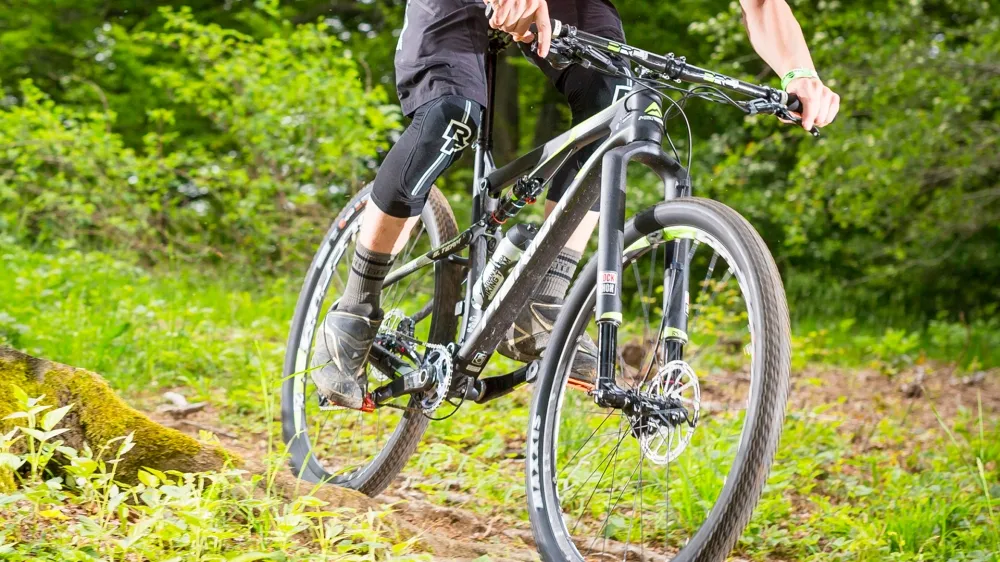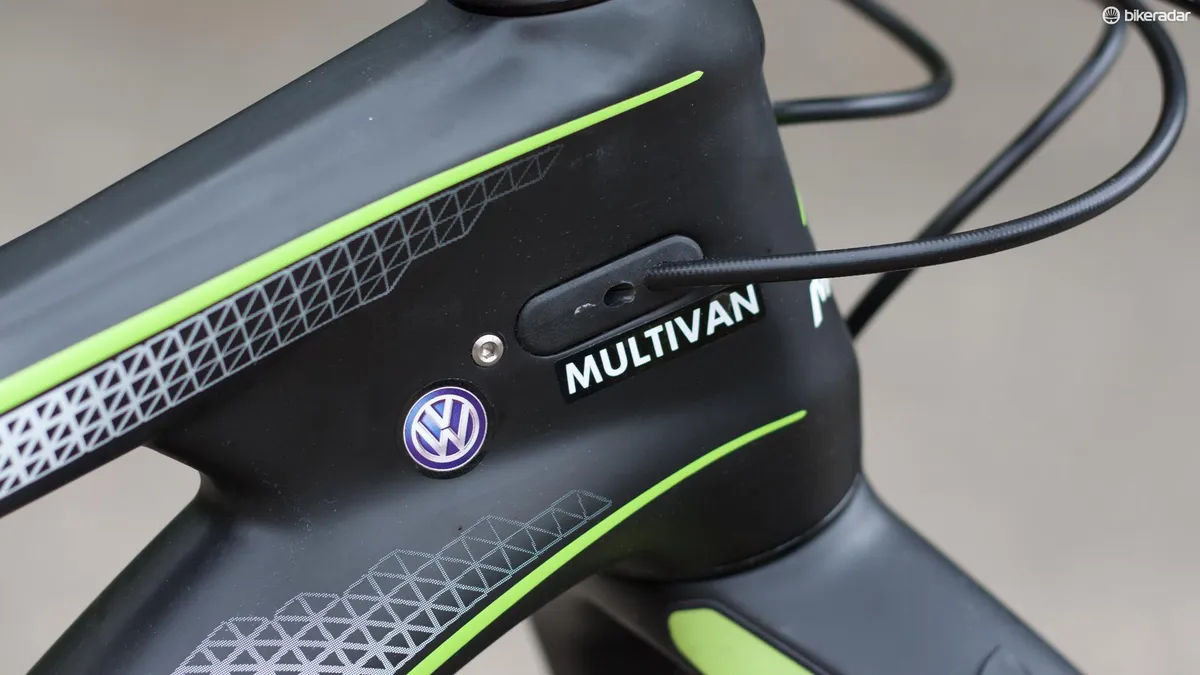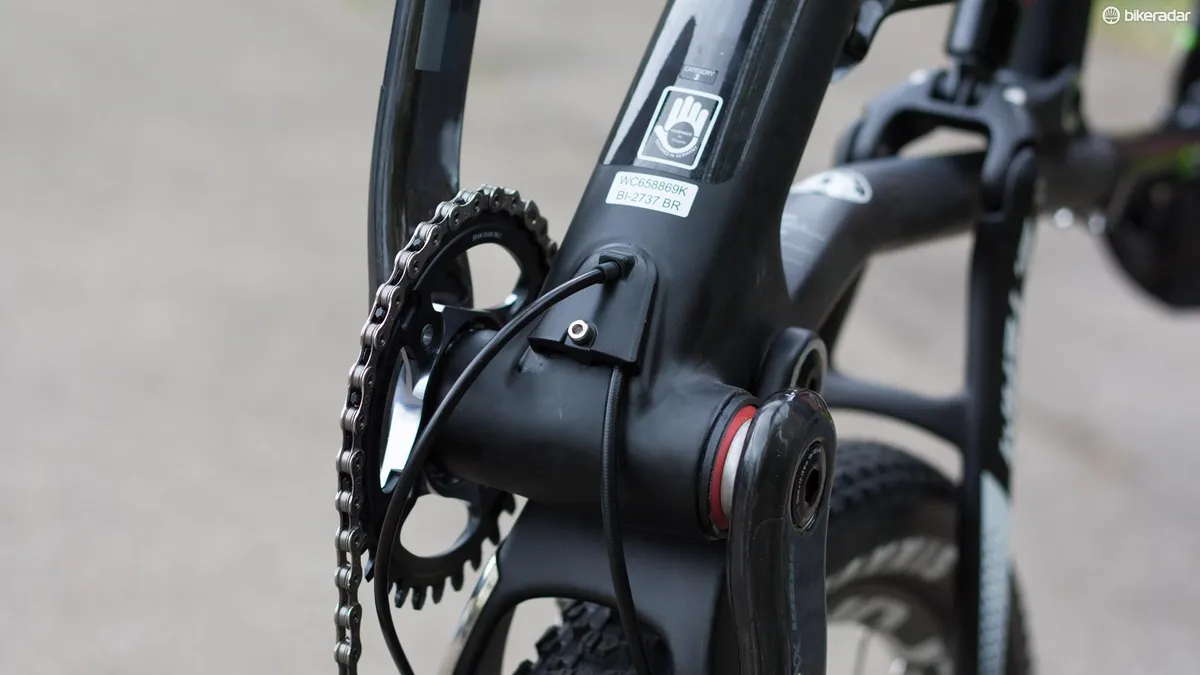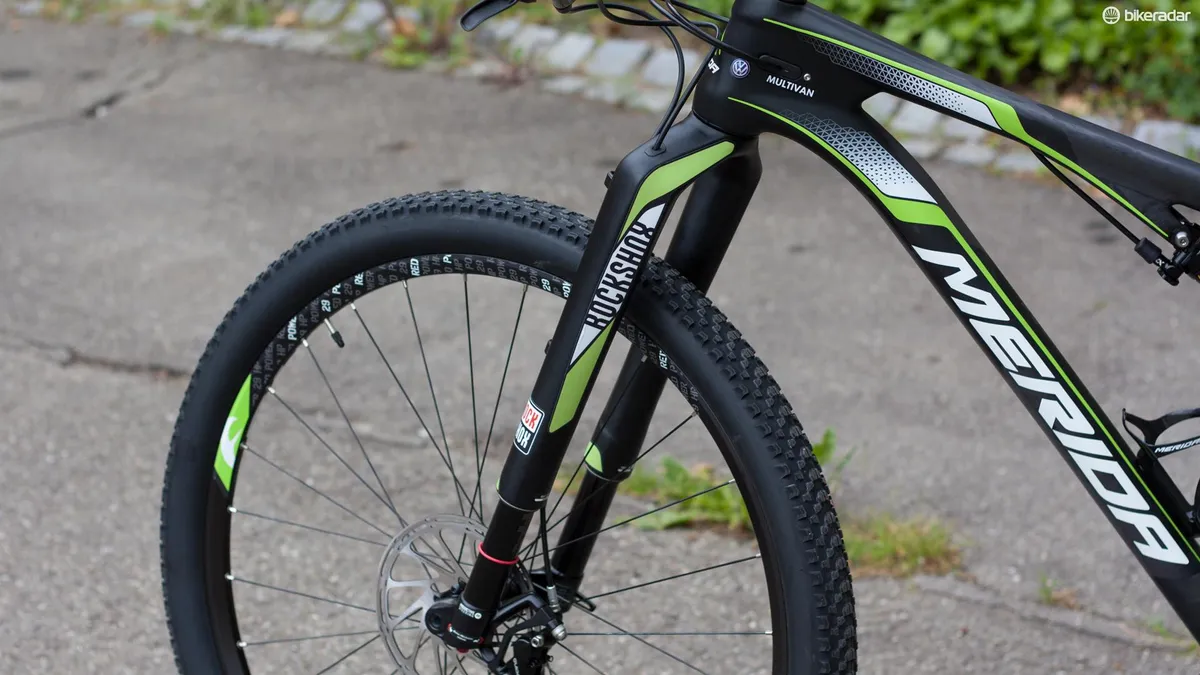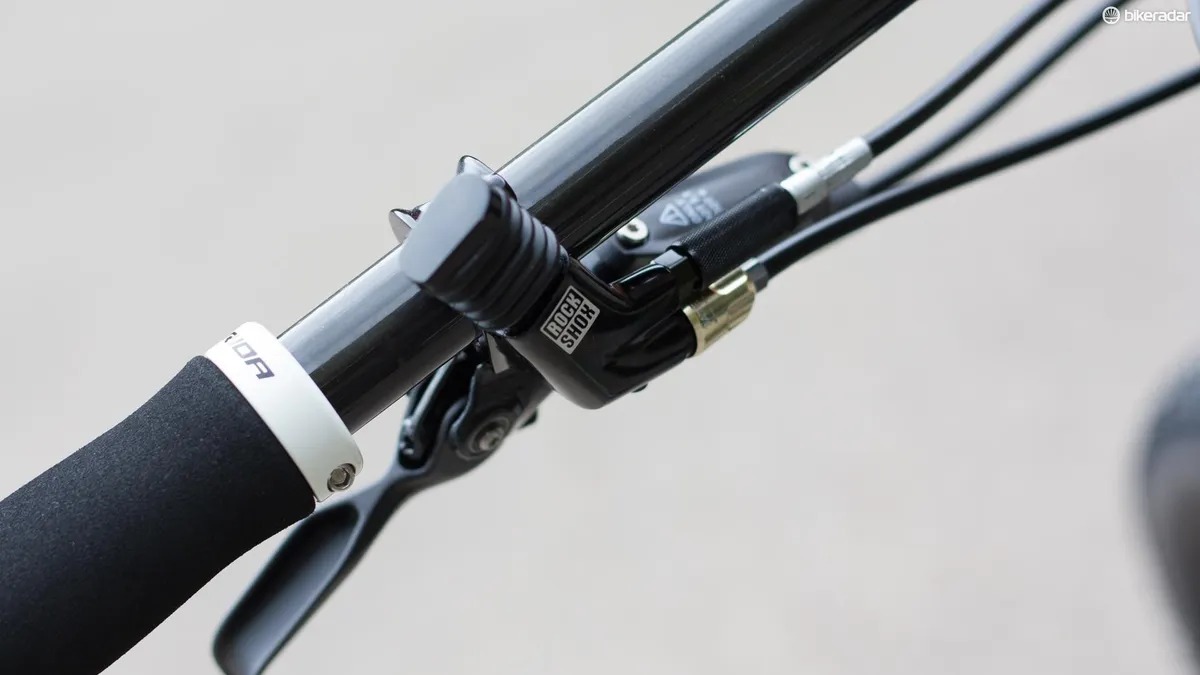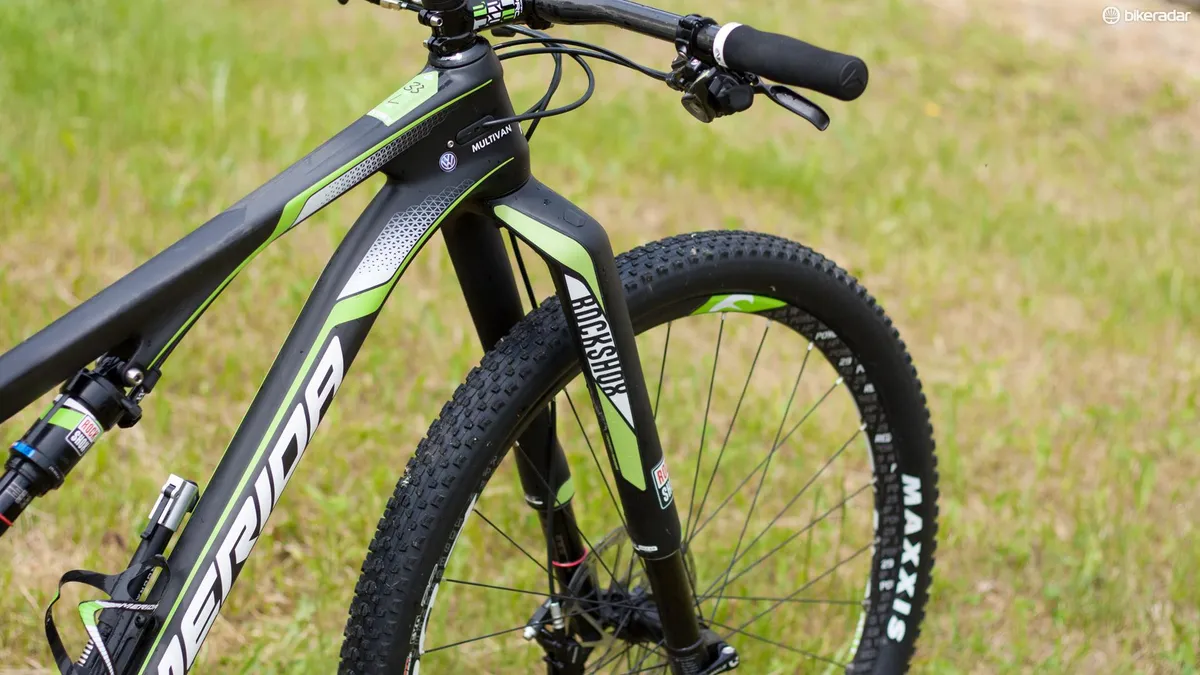Merida has released a new version of its popular Ninety-Six cross country race bike. First introduced from the brand back in 2007, the Ninety-Six was an out and out racer and, just as the name suggests, featured a frame that offered 96mm of suspension at the rear wheel.
The two bikes that superseded the Ninety Six were the Ninety Nine and its 29in variant the Big Ninety Nine. Despite embracing drivetrain and wheel size advances in the industry, these bikes were launched in 2011 and 2012 respectively and were really starting to show their age.
Enter the new Ninety-Six, now available in 650b and 29in options. Its full carbon chassis sports a new suspension design, updated geometry and details that allow compatibility with the latest components.

Riders who require a medium frame will get the choice of either a 650b or 29in wheel – for everyone else, the decision is made for them
Let’s go back to the wheel size thing briefly, because Merida holds quite a distinctive approach in this respect. Wheel sizes in the Ninety-Six range are dictated for the most part by the frame size on offer; in other words, depending on a rider’s height you’ll either get a 650b or 29in wheeled bike.
Anyone who needs a size small will only get the option of 650b wheels while those who need a size large or extra large frame will only be allowed 29in wheels. However, the Ninety-Six is produced with both 650b and 29in wheels in a size medium frame, so riders falling into that group get a choice.
The concept, which Merida calls (wait for it) ‘size specific wheeling’, is also set to be rolled out to other bikes in the company's range – but with different sizes crossing over for different disciplines.
Another big change is the suspension, which is now a faux-bar arrangement with the shock mounted below the top tube. Along with new and improved kinematics and better shock access, this arrangement allows Merida to produce a bike with a consistent rocker link position across all sizes – something the company has been criticised for not being able to provide with previous models.

All-new kinematics and a carbon rocker link make for better and more consistent control say Merida
There’s more to the story though, as the sizing concept discussed above means Merida has actually produced two quite unique frames. The 29er version offers a true-to-the-original 96mm of suspension, while the 650b model gets travel boosted to 108mm. That’s to compromise for those smaller wheels, according to Merida.
Despite the two versions of the bike having different geometry, the design principles remained the same. Merida worked closely with its Multivan cross country race team to advance from the geometries of the Ninety-Nine and Big Ninety-Nine bikes. Feedback from the team was unanimous in that the bike needed improvements to its agility, something that became obvious on the new generation of rougher XC courses. Merida’s answer was to chop the wheelbase and top tube measurements along with dropping the bottom bracket and opting for a lower front end.
The Ninety-Six is ready for 1x drivetrains off the peg but features a removable front derailleur mount for those who still want a front shifter. Similarly, the frame features full internal cable routing throughout, and thanks to a smart system that uses interchangeable inserts, is compatible with a stealth dropper post, Di2 and Fox’s iCD electronic suspension.
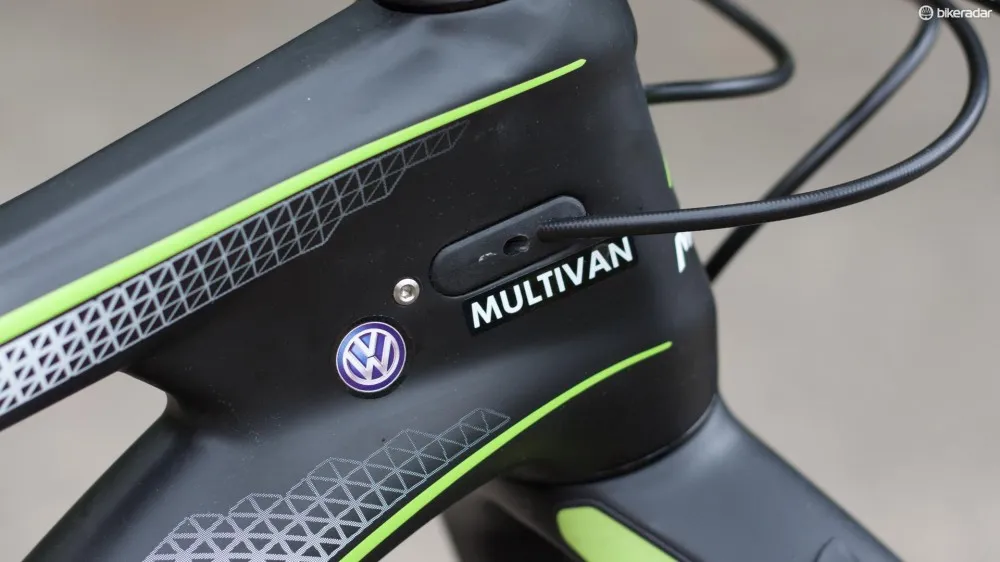
Merida's clever and versatile internal cable routing system
First ride Impressions
First up, it’s important to clarify that my test bike was a size large, and with the Ninety-Six that means 29” hoops only. My first impression of the Ninety-Six was a strange one – the rear end felt undersprung despite having the recommended sag/air pressure.
The frame’s kinematics explain this completely though, as the suspension leverage ratio goes from a falling rate to a rising rate – with the curve flattening off after the sag point. In basic terms, it’s very easy – and actually gets easier – to compress the shock up until the sag point. After this point the shock gets increasingly firmer to compress.
What that means on the trail is a remarkably supple and active rear end. Glance down between your legs at any moment during the ride and you’ll see considerable movement at the carbon rocker link. This delivered all the traction we could ask for but it became obvious it wasn’t the most efficient way to travel.
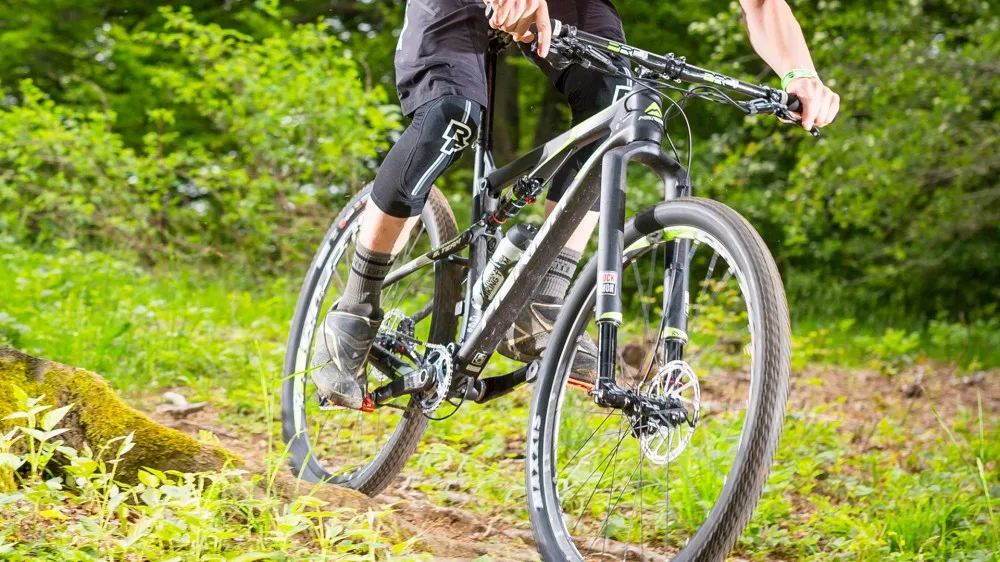
The Ninety-Six offered a level of fun we weren't expecting to encounter from such a bike
Thankfully the two position handlebar-mounted RockShox XLoc lever controls the compression settings of the suspension at each end simultaneously. One push of the thumb and the bike suddenly takes itself more seriously. On my test bike this pushed both ends into a firm compression setting – it wasn’t the total lockout I was expecting, but then again it meant I experienced none of the skittish, sketchy feeling I’d associate with a lockout that’s too firm.
Instead, I found grip levels were very similar to when set in open mode, but both the Monarch XX and the RS-1 were now refusing to wallow anywhere near as much of my efficiency away.
The effect was so good that I actually preferred the bike in this setting. Only the roughest descents really warranted reverting back to the fully open mode. For those who prefer a more solid lockout, the settings for the fork can be tweaked via a barrel adjuster on the XLoc lever.
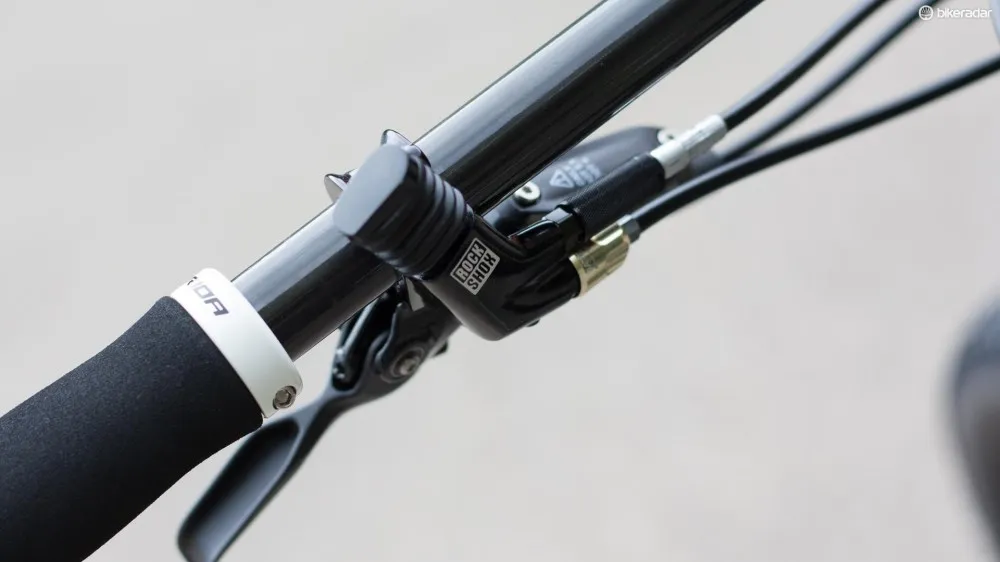
XLoc lockout lever offers useful and adjustable compression adjustment
The front end with its negative rise stem and reserved bar width is aggressive without being intimidating. Even for a rider like me who's used to trail bikes, it was very quick to adapt to. The RockShox RS-1 fork offers a unique feel and its small bump sensitivity is great – when paired with the foam grips and carbon cockpit it made for a setup that was really easy on the wrists.
The test route didn’t feature many demanding or high speed corners, but at times I could feel the front end was less precise than a conventional fork. The feeling is similar to that of having a flexy tyre casing – something that wasn’t down to the 2.2in Maxxis Ikon tyres that were in place. The fork could offer more support too, but that’s easily remedied adding one of RockShox’s Bottomless Token air volume reducers.
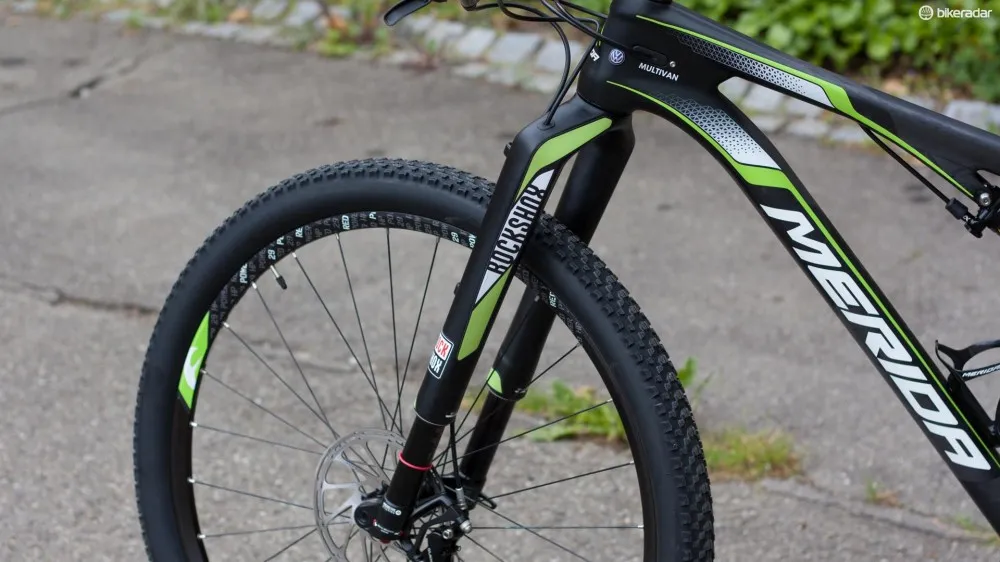
The build of my test bike consisted of plenty of proven parts, including SRAM’s excellent XX1 drivetrain and Guide RSC brakes. Aside from the Fulcrum alloy wheels, the bike we tested is the same as the bike the Merida Multivan team are currently attacking the Cross Country World Cup with. Merida claimed the total weight for our test bike was 11kg/24.25lb.
The new Ninety-Six has been created by racers for racers and it’s an incredibly capable machine – but that’s not the full story. The Ninety-Six is a true treat on the trails and delivers a fun factor that many cross country bikes can’t match.
Don’t hold me to it yet, but I suspect that with a more trail orientated cockpit and a dropper post the Ninety-Six would punch far above its XC aspirations.
Pricing and availability
The 2016 Ninety-Six will soon be available in many different spec levels, ranging from an entry-level alloy framed version at approximately £1,250 to the full blown Team model as tested here which is expected to cost around £6,000. International pricing is still TBC, we'll update as soon as we have more solid information.

